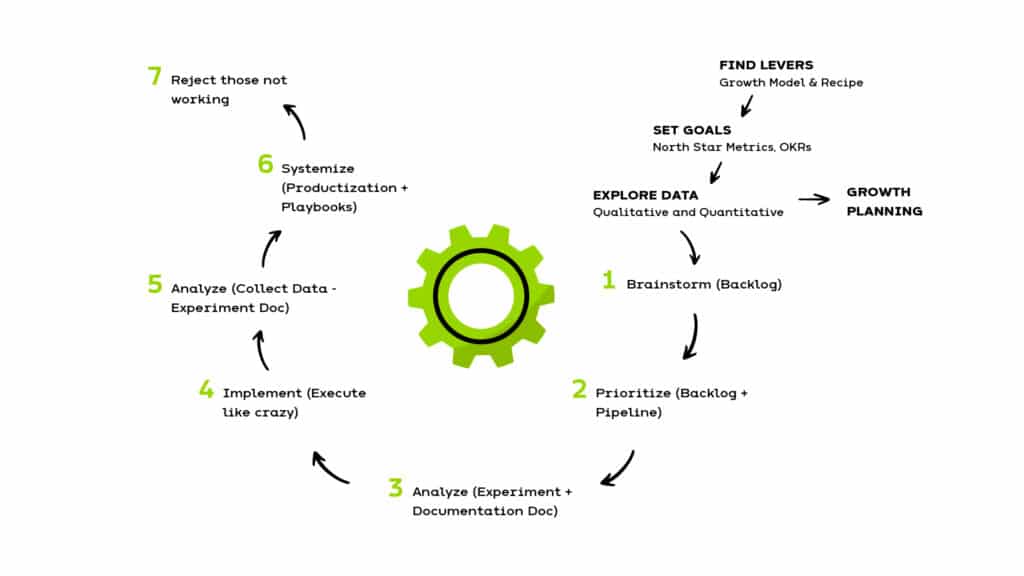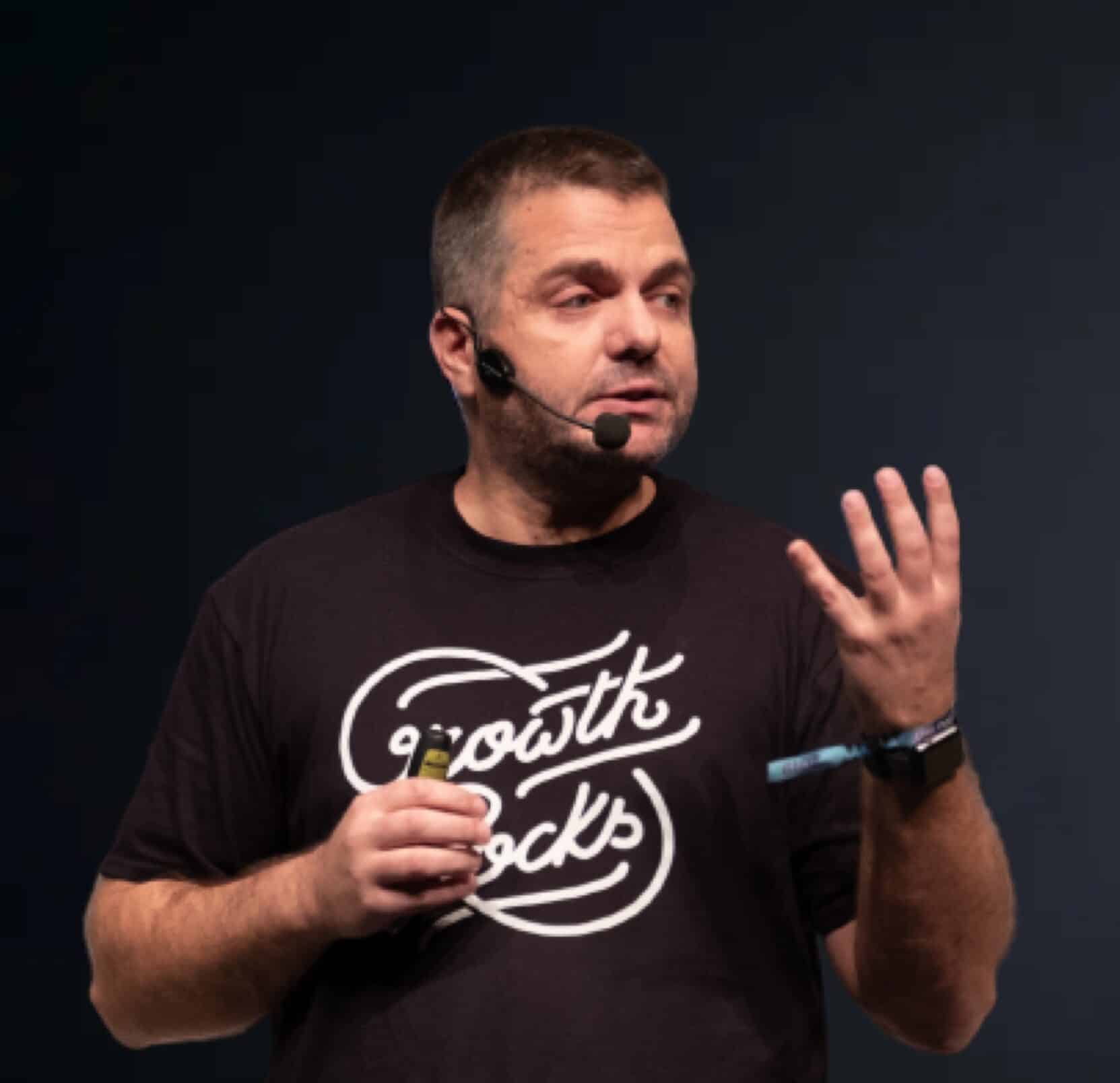A Funny Little Story About Perfectionism
Back in my early professional days, I had this go-to question for job candidates: “What’s one characteristic about yourself you’re not proud of?” Almost every time (okay, most of the time), the answer was a variation of “I’m a perfectionist.” I could tell they were trying to frame it as a strength—like saying, “Look how dedicated and detail-oriented I am!” But here’s the kicker: I never once looked back at anyone and said, “Wow, that’s amazing!” I usually thought, “Huh, that’s…not great.” I mean, being a perfectionist doesn’t impress me—especially when I know the motives behind perfectionism, and what I value more is agility, adaptability, and the ability to roll with the punches. So, spoiler alert: perfectionism doesn’t win bonus points here.
The Two Faces of Perfectionism
Perfectionism is often seen as a virtue—a sign of high standards and commitment. But in marketing, it can quickly turn into a stumbling block. While striving for excellence can elevate your brand, chasing unattainable perfection often leads to delays, missed opportunities, and diminished returns.
Agility, on the other hand, embraces the imperfection inherent in progress. It values speed, adaptability, and real-world feedback, making it the cornerstone of successful marketing in today’s fast-paced environment. So how do we balance these two forces?
The Growth Hacking is preaching agility. As “Marketing made by engineers”, growth hacking (aka growth marketing) is about utilizing data-driven strategies, rapid experimentation, and innovative tactics to identify the most efficient ways to drive growth and achieve results quickly, all while adapting to feedback and iterating continuously.

But wait… do you believe that perfectionism is about pursuing of excellence? Well, not exactly...
Perfectionism (The Bad)
Perfectionism typically has a negative connotation, and the distinction lies in the motivation and mindset behind the pursuit of excellence. In other words, it has to do with the why on perfectionism. Here are the main whys:
- Fear-Driven Motivation: Perfectionism is often driven by the fear of failure, judgment, or criticism, rather than a genuine desire for growth or excellence.
- Paralyzing Standards: It involves setting unrealistic, unattainable standards that can hinder progress and lead to frustration.
- Shame and Self-Criticism: Perfectionists tend to equate their self-worth with their achievements, so any perceived failure becomes deeply personal and damaging.
- Lack of Adaptability: The need to achieve flawlessness can make perfectionists rigid, resistant to feedback, and slow to adapt to change.
Healthy Striving (The Good)
In contrast, as Brené Brown explains in her book “Dare to Lead,” Healthy striving refers to the process of setting high standards and working toward meaningful goals in a way that is self-compassionate, realistic, and driven by intrinsic motivation rather than by fear of judgment or external validation. Here are some characteristics to identify the strivers:
- Focus on Growth: It emphasizes learning, growth, and progress rather than obsessing over flawless execution.
- Self-Compassion: Unlike perfectionism, which is rooted in self-criticism and fear of failure, healthy striving allows room for mistakes and views setbacks as opportunities to improve.
- Intrinsic Motivation: Goals are pursued for personal fulfillment or alignment with one’s values rather than to meet others’ expectations or to avoid criticism.
- Connection: It recognizes that vulnerability, collaboration, and seeking support are part of achieving meaningful results.
- Balanced Perspective: Healthy striving encourages balancing ambition with recognition of personal limits, preventing burnout and maintaining well-being.
Brown argues that while perfectionism is paralyzing and rooted in the need to avoid shame, healthy striving is liberating and driven by courage and a genuine desire to achieve meaningful outcomes. It’s about being committed to the process while letting go of the need for constant approval.
A comparison table contrasting perfectionism with healthy striving to see the differences in a single view
| Aspect | Perfectionism | Healthy Striving |
|---|---|---|
| Motivation | Driven by fear of failure and judgment. | Driven by intrinsic motivation and a desire for growth. |
| Focus | Fixates on avoiding mistakes and achieving flawlessness. | Focuses on learning, progress, and meaningful goals. |
| Response to Failure | Views failure as a source of shame and inadequacy. | Sees failure as an opportunity for learning and growth. |
| Self-Talk | Self-critical and harsh. | Kind and encouraging. |
| Impact on Well-Being | Often leads to anxiety, burnout, and dissatisfaction. | Promotes resilience, satisfaction, and well-being. |
| Goals | Rigid and unrealistic, based on external validation. | Realistic and flexible, aligned with personal values. |
| Key Driver | External approval and fear of criticism. | Personal growth and alignment with values. |
| Collaboration | Reluctant to seek help; prioritizes individual achievement. | Open to seeking support and fostering collaboration. |
Despite clear evidence highlighting the drawbacks of perfectionism, effectively communicating this to stakeholders remains challenging. This difficulty often stems from deeply ingrained beliefs that equate perfectionism with high performance and success.
In companies like B2B Agencies or B2B Service Providers, that’s even more difficult because of the multiple stakeholders. Let’s take the example of an Agency…
Perfectionism in Marketing
The Agency’s Dual Focus on Perfection
As a marketing agency, we have two different stakeholders, which are critical targets for perfection:
The inner Company (The agency and agency’s leadership): Meeting internal standards and brand expectations and delivering the best possible manner.
The outer Stakeholders (Company’s Potential Clients and their project leads): Delivering a compelling and effective project that resonates with quality standards and brings results. Although striking the right balance means delivering work that satisfies both without getting stuck in the trap of overthinking or over-polishing, seems to be a message easy to convey, most agencies fail to communicate it, and they are perceived as “bad executors” or not “pixel-perfect”
The Problem with Perfectionism in Marketing
Perfectionism can be a hidden enemy of progress. The endless tweaking and hesitation to launch until everything is “just right” can stall momentum and stifle creativity. Research shows that perfectionism often leads to worse outcomes, not better ones, because it prioritizes fear of failure over learning and adaptation.
Every moment spent perfecting something is a moment lost for experimentation and growth. In marketing, agility often outperforms perfection by quickly testing, learning, and iterating.
The Power of Agility and the 80/20 Rule
Here’s where the 80/20 rule comes into play: 80% of the effort that achieves the desired result is good enough to move forward. The remaining 20% can be reserved for iteration and optimization once the campaign is live. Crucially, this 80% should include safeguarding the brand—nothing should harm its reputation or integrity.
Convincing clients of this mindset is key. Starting with the 80% that drives results creates a foundation to build on, while waiting for 100% perfection often leaves competitors ahead in the race.
Dare to Experiment: The Role of Agility in Testing Ideas
Experimentation is the heartbeat of growth marketing. It thrives on imperfection because every experiment is a learning opportunity. Agility allows you to test ideas, measure their impact, and refine them—an impossible cycle if perfection is the only goal. With agile workflows, you can move even faster and adjust based on real-time feedback, without waiting for everything to be perfect.
By daring to experiment, you can balance calculated risks with brand protection. Experiments provide the data to decide what’s worth perfecting later and what can be improved through iteration.
Setting Expectations: Aligning with Clients
Sometimes, experiments fail, and that’s okay. The level of perfection in execution is rarely the reason for failure. As marketers, we must set this expectation with our clients: progress matters more than polish.
Creating a shared language around success is vital. We help clients understand that results come from testing, learning, and adapting—not from waiting for perfection before launching.
Sometimes, Perfect Makes Sense
There are moments when perfection is worth pursuing, especially when it directly impacts the results of an experiment or campaign. However, these moments should be exceptions, not the rule. Identifying when perfection truly matters helps allocate resources wisely and keeps the focus on what drives results.
Perfectionism Across the Process
Perfectionism doesn’t apply universally—it must be tailored to specific aspects of the marketing process. For example, automation systems, such as the initial step in capturing user data, need to be flawless to ensure accuracy and efficiency. However, follow-up steps can be more “au point,” as the French say—good enough to function effectively without overcomplication. Similarly, brand aesthetics, user experience (UX), and visuals, such as advertisements and supportive materials, demand varying degrees of perfection. Ensuring that these elements align with your overall strategy without overpolishing helps maintain agility while upholding quality.
The Role of Speed and Iterative Perfection
The primary reason for not aiming for perfection from the start is to maintain speed and agility. This approach lets you launch quickly, gather feedback, and make informed improvements. However, this doesn’t mean settling for subpar work or delivering results that don’t meet the brand’s standards. Perfection should come in waves—each iteration bringing you closer to excellence. Agility isn’t an excuse for delivering semi-cooked work; it’s a strategy to prioritize progress while setting the stage for continuous refinement. This ensures the job is always as good as the brand deserves, even if it’s not flawless at the outset.
Shifting the Mindset
Embracing imperfections is a skill every marketer should cultivate. Think of it like learning to walk: a child doesn’t wait to perfect the theory before taking their first step. They fall, adjust, and try again until they succeed. The same principle applies to marketing.
Agility fosters creativity and innovation by allowing you to act quickly and learn from feedback. Every “failure” in this process becomes a step toward improvement.
Practical Steps for Balancing Perfectionism and Agility
- Set Achievable Standards: Define “good enough” for internal and client-facing work.
- Prioritize Brand Integrity: Ensure that 80% includes that the brand’s reputation is protected.
- Focus on Results: Remember that progress, not polish, drives success.
- Communicate Clearly: Align with clients on the value of experimentation and iterative improvement.
A perfectionist Growth Hacker
This professional would exhibit characteristics that combine the tendencies of perfectionism with the principles of growth hacking. Quite controversial, right? Indeed.
Are you a perfectionist? Don’t become a Growth Hacker!
While growth hacking emphasizes agility, experimentation, and rapid iteration, a perfectionist growth hacker may struggle with balancing these ideals due to their pursuit of flawlessness. Here’s how their traits might manifest:
- Reluctance to Launch Until Perfect: They may hesitate to execute an experiment or campaign until every element—data, design, messaging, or automation—is flawless, delaying progress.
- Over-Optimization of Early Stages: Excessive focus on perfecting initial steps, such as automation workflows, A/B test setups, or campaign details, potentially at the expense of overall efficiency and scalability.
- Fear of Failure or Negative Feedback: A perfectionist growth hacker might avoid taking risks or experimenting boldly, fearing that mistakes could harm their reputation or the brand’s integrity.
- Overly Detailed Metrics: They may obsess over granular details in data analysis, focusing on minor metrics rather than the big-picture outcomes that drive growth.
- Rigid Standards for Visuals and Branding: An insistence on perfect aesthetics, UX, or creative assets may slow the iterative process that growth hacking relies on.
- Difficulty Adapting to Real-Time Feedback: They might resist pivoting based on early results, prioritizing their pre-planned ideas and execution over agility.
- Stress and Burnout Tendencies: The pressure to meet unattainable standards can lead to emotional exhaustion, particularly in the fast-paced, iterative environment of growth hacking.
- Focus on the Process (over-engineering) Over Outcomes: They may prioritize creating a perfect process or system, sometimes at the expense of short-term results or agility.
To thrive as a growth hacker, a perfectionist needs to embrace the idea that:
- Imperfect experiments can yield valuable insights.
- Progress comes from iteration, not from waiting for flawless execution.
- The 80/20 rule is crucial—focusing on the 80% that drives the most impact while refining the remaining 20% over time.
By channeling their high standards into critical areas (e.g., brand integrity or crucial data workflows) while staying flexible and prioritizing speed, perfectionist growth hackers can leverage their meticulous nature without hindering growth.
Our role in creating (or not) perfectionists
As leaders, our behavior, expectations, and communication style play a pivotal role in shaping the mindset of our team members. If people on our team become perfectionists who are afraid of us and strive for pixel-perfect work out of fear, it often reflects how our leadership is perceived. After years of running teams, here’s how our role influences this dynamic and what we can do to foster a healthier environment:
The dont’s
- Setting Unrealistic Expectations: Constantly emphasizing flawlessness or criticizing small errors can lead to a culture where team members feel their work must be perfect to gain approval.
- Over-Emphasizing Results Over Learning: If outcomes are always prioritized over the process, employees may fear mistakes and focus solely on producing perfect deliverables rather than innovating or experimenting.
- Fear-Based Communication: A lack of psychological safety, such as reprimanding failure harshly or being overly critical in feedback, can make people more afraid of taking risks and drive perfectionist tendencies.
- Micromanagement: Constantly checking in, correcting, or controlling minor details can signal to your team that only perfection is acceptable, stifling their confidence and autonomy.
- Inconsistent or Undefined Standards: If expectations are unclear or change frequently, team members may resort to over-delivering in every area out of fear of falling short.
The do’s
- Create Psychological Safety: Foster an environment where team members feel safe to make mistakes and learn from them. Reinforce that failure is part of growth, and mistakes won’t be punished but treated as learning opportunities.
- Celebrate Iteration and Progress: Emphasize the value of progress over perfection. Acknowledge the effort and innovation behind imperfect work, even when it needs refinement.
- Balance High Standards with Flexibility: While maintaining high standards, clearly communicate when something needs to be “pixel perfect” (e.g., client-facing deliverables) versus when “good enough” is sufficient (e.g., internal prototypes or experiments).
- Model Imperfection: Share your own missteps or learning moments as a leader. This vulnerability demonstrates that perfection isn’t the expectation and that growth comes through trial and error.
- Set Clear Priorities: Define which elements are critical to focus on and where flexibility is allowed. This helps employees understand where their efforts matter most and reduces unnecessary stress.
- Provide Constructive Feedback: When reviewing work, focus on offering actionable, positive feedback rather than nitpicking small details. Highlight areas of success and frame improvements as opportunities for growth.
- Encourage Risk-Taking and Experimentation: Promote a culture of agility where trying new ideas is encouraged, even if they’re not perfect. Recognize efforts that lead to innovation, regardless of the final outcome.
- Recognize Effort, Not Just Results: Regularly appreciate the dedication and hard work of your team, not just the end product. This reinforces intrinsic motivation rather than fear-driven perfectionism.
By leading with empathy, clarity, and an emphasis on growth, you can reduce fear-driven perfectionism and cultivate a culture where team members feel confident, agile, and motivated to do their best work.
Conclusion: Choosing Progress Over Perfection
In marketing, perfectionism can be a barrier to growth, while agility opens the door to endless possibilities. Starting with 80% ensures you can move quickly, learn from real-world feedback, and adapt to achieve success. By focusing on progress over perfection, you not only meet your goals but often exceed them in the long run.
On another note
This may look a bit unrelated, but believe me, it’s not. I (Theo Moulos – CEO of GrowthRocks) keep the cheat sheet below to recognize my team’s different types of perfectionists. I thought it’s a good idea to share it with you all.
As Paula Davis, founder, and CEO of the Stress & Resilience Institute, mentions, in the table below is how we identify each type judging from their behavior:
| Type | Key Traits | Humor Style | Challenges | Associated Behaviors |
|---|---|---|---|---|
| Self-Oriented Perfectionism | High personal standards. • Self-critical if failing to meet expectations. • Linked with nurturing, intimacy, and altruism. | Affiliative (building emotional bonds). | Overwhelmed by personal expectations. • Risk of burnout or anxiety. | Strives for self-improvement. • Can be empathetic and socially engaging. |
| Socially Prescribed Perfectionism | Believes others expect them to be perfect. • Feels others will be critical if they fail. • Linked with low self-esteem. | Self-deprecating (poking fun at oneself). | Difficulty coping with stress. • Vulnerable to feelings of inadequacy. | Avoids risk for fear of judgment. • Often seeks external validation. |
| Other-Oriented Perfectionism | Expects others to be perfect. • Highly critical of others who fall short. • Described as uncaring or dominating. | Aggressive (criticizing others). | Strains relationships. • Low interest in helping or supporting others. | Uses humor to show disapproval. • Often rigid and judgmental. |
| Overt Perfectionism | Prefers order; anxious without it. • Avoids activities they can’t excel in. • Linked to a fixed mindset. | Opinionated humor; likes being “right.” | Limited by fear of failure. • Difficulty embracing new or challenging tasks. | Avoids risks. • Seeks control in situations or environments. |
| Covert Perfectionism | “Closeted” perfectionists; outwardly laid back but internally ambitious. • Secretly seeks success. | None overtly specific. | Internal conflict; wants success but avoids action. • Can appear inconsistent. | Avoids showing ambition. • May procrastinate or downplay goals. |
Was this article useful?

Theodore has 20 years of experience running successful and profitable software products. In his free time, he coaches and consults startups. His career includes managerial posts for companies in the UK and abroad, and he has significant skills in intrapreneurship and entrepreneurship.



